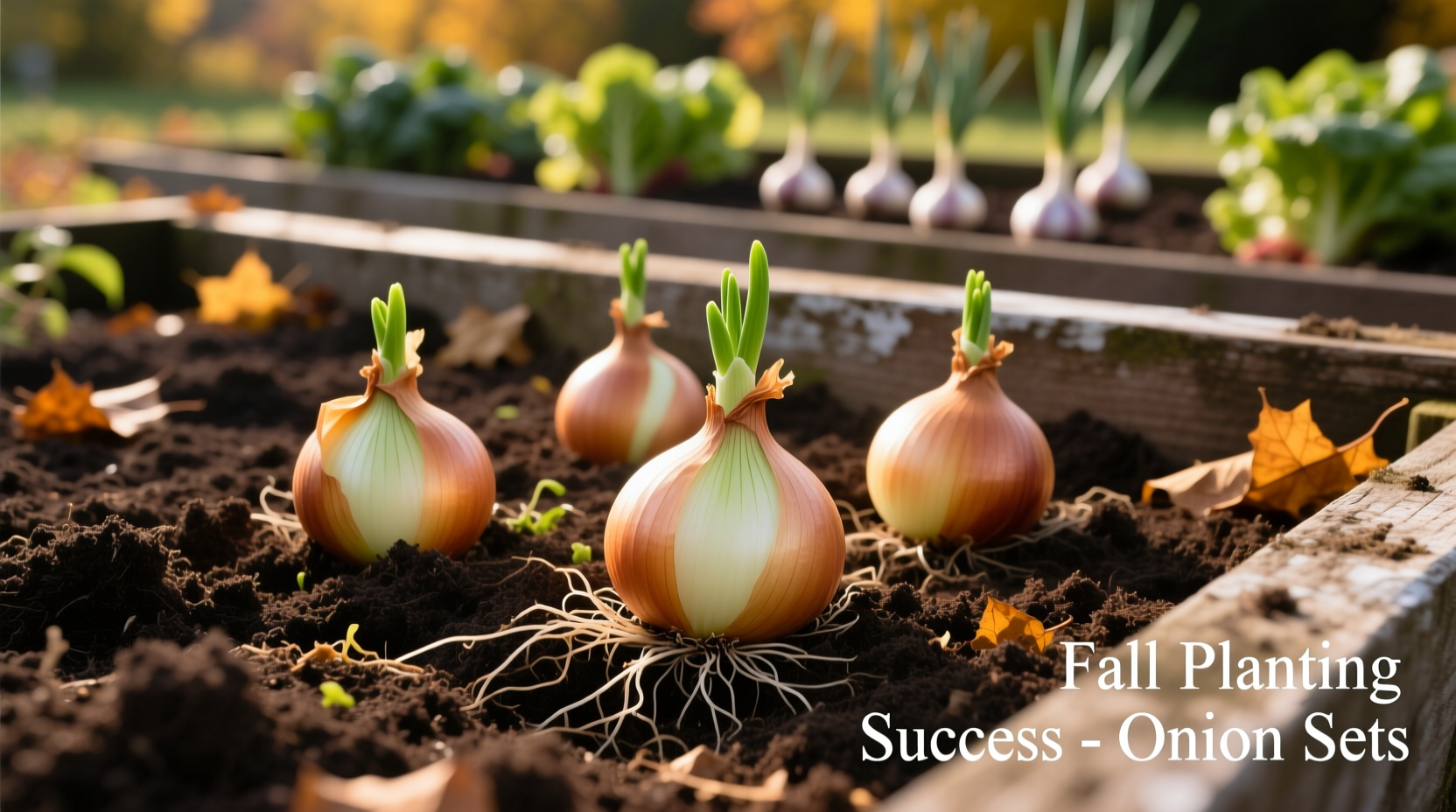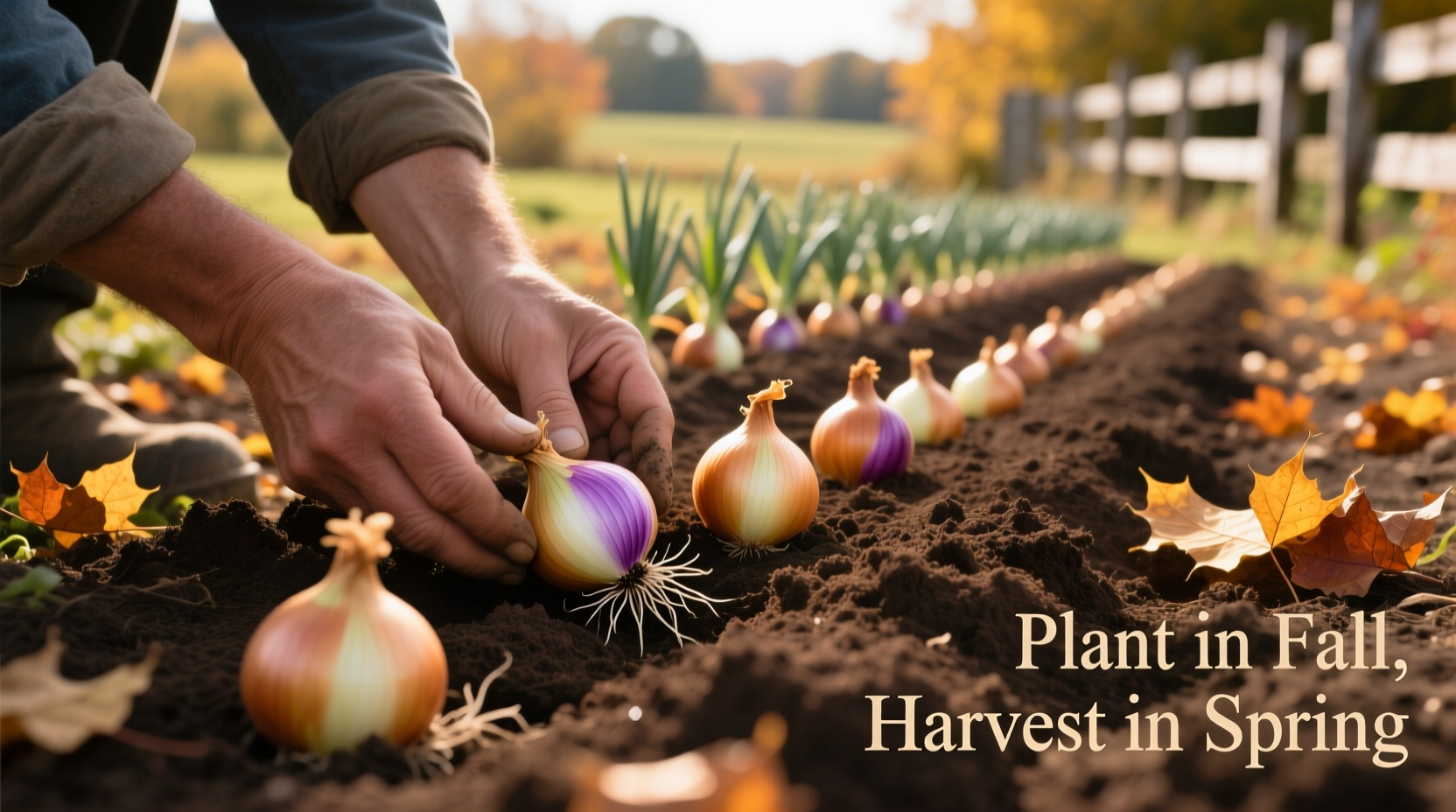Why Fall Onion Planting Outperforms Spring Planting
Fall-planted onions establish root systems before winter dormancy, giving them a significant growth advantage come spring. According to research from the University of Minnesota Extension, fall-planted onions typically yield 30-40% larger bulbs than their spring-planted counterparts. The key biological advantage lies in the onion's growth cycle—they require vernalization (exposure to cold temperatures) to initiate bulb formation.
"Fall planting aligns with onions' natural growth patterns," explains Dr. Rebecca Brown, horticulture specialist at Cornell University. "Onions planted in autumn develop stronger root systems before winter, leading to more vigorous spring growth and better resistance to pests like thrips."

Best Onion Varieties for Fall Planting
Not all onions thrive when planted in fall. Your selection must match your geographic location's day-length requirements. Long-day varieties (requiring 14-16 hours of daylight to bulb) work best in northern regions, while short-day onions (needing 10-12 hours) suit southern climates.
| Variety Type | Recommended Varieties | USDA Zones | Planting Window |
|---|---|---|---|
| Long-Day Bulbing | Northport, Walla Walla, Redwing | 3-6 | Sept 1-Oct 15 |
| Intermediate-Day | Candy, Super Star | 5-7 | Sept 15-Oct 30 |
| Multiplier Onions | Evergreen Hardy White, Egyptian Walking | 3-8 | Sept 1-Nov 1 |
Perfect Timing: When to Plant Onions in Fall
The critical factor for successful fall onion planting is timing your planting 4-6 weeks before your region's first expected hard frost (28°F or lower). This allows sufficient time for root development without significant top growth that could be damaged by freezing temperatures.
Use this planting timeline based on USDA zones:
- Zones 3-4: Plant September 1-15 (expect harvest June)
- Zones 5-6: Plant September 15-October 15 (expect harvest late May)
- Zones 7-8: Plant October 1-November 15 (expect harvest April-May)
Monitor soil temperature—ideal planting conditions occur when soil cools to 50-65°F. The USDA National Agricultural Statistics Service confirms that planting when soil temperatures consistently fall below 70°F significantly improves overwintering success rates.
Step-by-Step Fall Planting Process
Follow these research-backed steps for optimal results:
Soil Preparation (2-3 Weeks Before Planting)
- Test soil pH (ideal range: 6.0-6.8)
- Amend with 3-4 inches of compost
- Add balanced organic fertilizer (5-10-10)
- Create raised beds 4-6 inches high for better drainage
Planting Day Checklist
- Use certified disease-free sets or transplants
- Plant sets 1-2 inches deep, 4-6 inches apart
- Space rows 12-18 inches apart
- Water thoroughly after planting
Winter Protection Strategies That Work
Proper winter protection separates successful fall onion plantings from failures. The primary threat isn't cold itself but repeated freeze-thaw cycles that heave plants from the soil.
Apply 3-4 inches of organic mulch (straw, shredded leaves, or pine needles) after the ground cools to 40°F but before hard freezes. Research from the Penn State Extension shows properly mulched onions survive temperatures as low as -20°F in Zone 5 when planted at the correct depth.
Key mulching considerations:
- Wait until soil cools to apply mulch (prevents rot)
- Use breathable materials (avoid plastic)
- Remove mulch gradually in spring as temperatures warm
- Replenish mulch if winter winds displace it
Troubleshooting Common Fall Planting Issues
Problem: Onions sprouting in fall
Solution: This indicates planting occurred too early. For future plantings, wait until soil temperatures consistently fall below 65°F.
Problem: Plants heaved from soil
Solution: Apply additional mulch immediately and gently press plants back into soil. Improve drainage for next season.
Problem: Rotting sets
Solution: Indicates poor drainage. Plant in raised beds and amend soil with compost before next planting.
Spring Care and Harvest Timeline
As temperatures warm in spring, gradually remove mulch to allow soil warming. Once active growth resumes (when tops reach 4 inches):
- Apply balanced fertilizer (10-10-10)
- Water consistently (1 inch per week)
- Monitor for thrips and treat organically if needed
Harvest timing varies by variety and planting date:
- Green onions: 60-80 days after spring growth resumes
- Bulbing onions: When tops fall over naturally (typically June-July)
- Storage onions: Cure for 2-3 weeks in dry, ventilated area
According to the USDA Agricultural Research Service, fall-planted onions typically mature 2-3 weeks earlier than spring-planted crops, with significantly larger bulb sizes due to their extended root development period.











 浙公网安备
33010002000092号
浙公网安备
33010002000092号 浙B2-20120091-4
浙B2-20120091-4